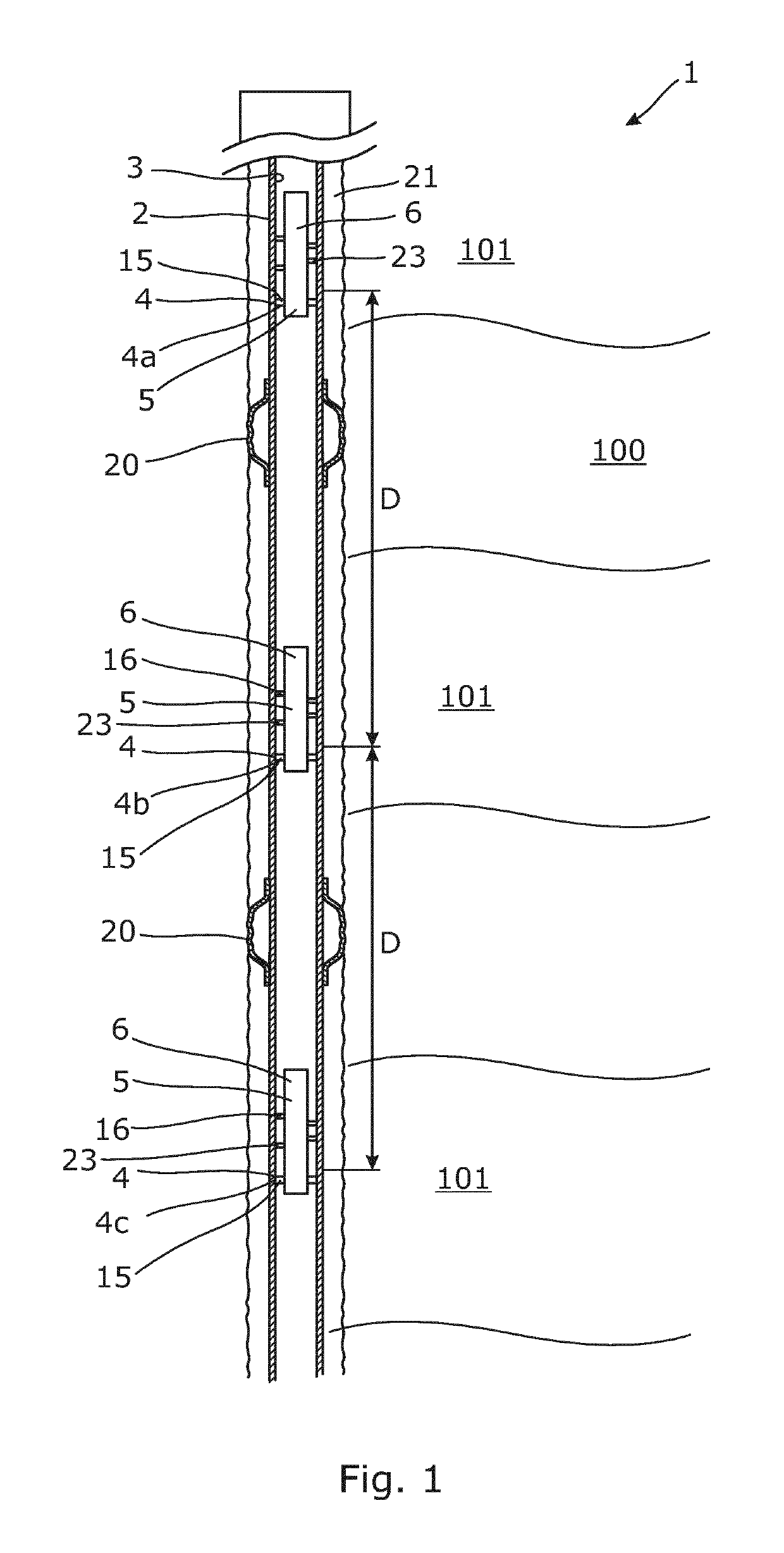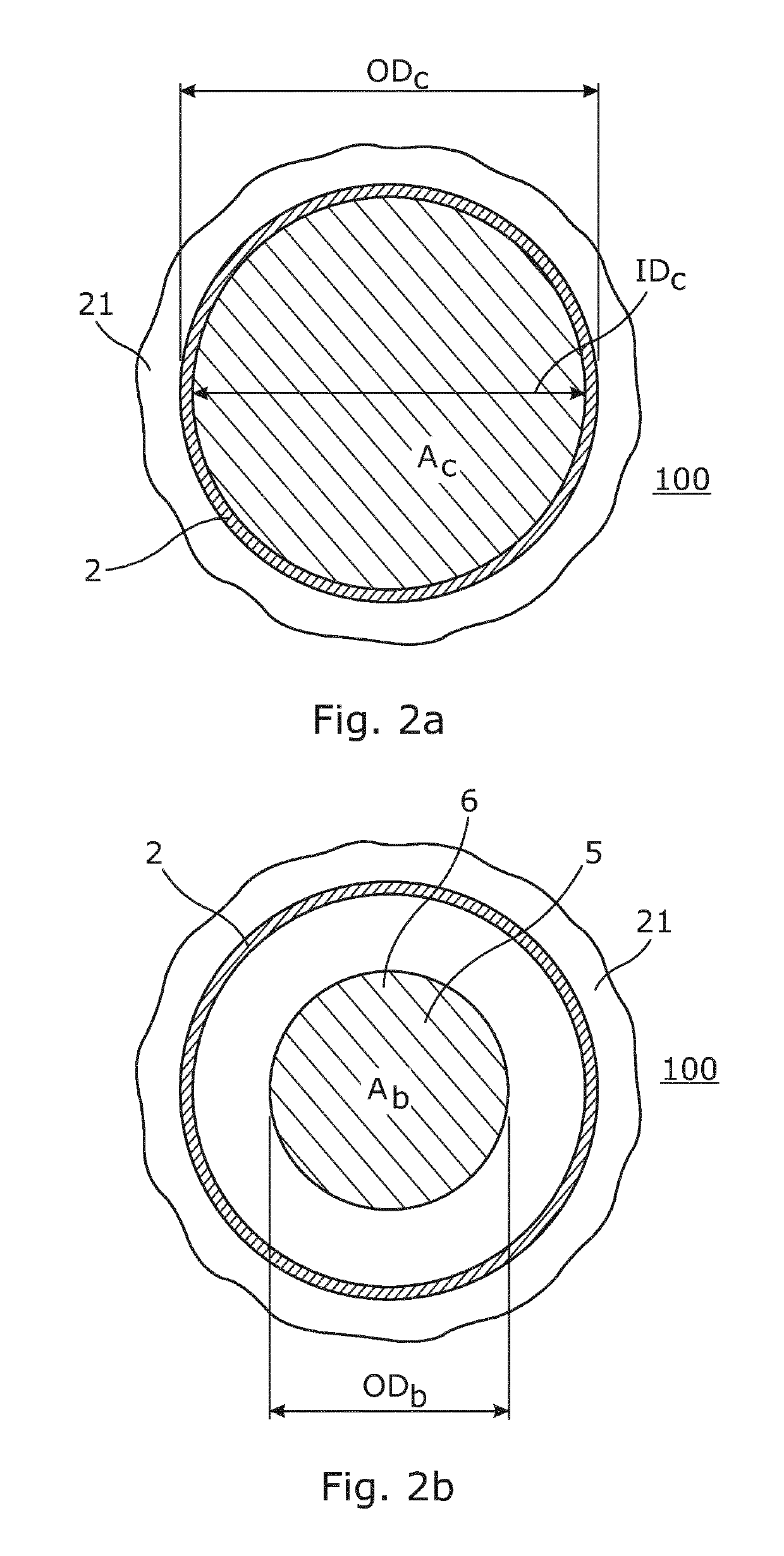Downhole valve system
a valve system and downhole technology, applied in the field of downhole valve systems, to achieve the effect of less reduction
- Summary
- Abstract
- Description
- Claims
- Application Information
AI Technical Summary
Benefits of technology
Problems solved by technology
Method used
Image
Examples
Embodiment Construction
[0076]FIG. 1 shows a downhole valve system 1 for controlling an inflow of a fluid from several production zones 101 in a formation 100. The system 1 comprises a casing 2 arranged in a borehole 21 and annular barriers 20 for isolating the production zones 101. The casing 2 comprises a plurality of valves 4, 4a, 4b, 4c arranged spaced apart from each other by distances for controlling the inflow of the fluid from the production zones 101 and into the casing. The system 1 further comprises a plurality of autonomous operating adjusting devices 5 each controlling one of the plurality of valves 4. Each autonomous operating adjusting device 5 comprises a body 6 having an outer body diameter ODb (shown in FIG. 2). The plurality of autonomous operating adjusting devices 5 are fastened to an inner surface 3 of the casing 2. The autonomous operating adjusting devices 5 are arranged in succession of each other in the casing 2 so that the lowest autonomous operating adjusting device 5 is first a...
PUM
 Login to View More
Login to View More Abstract
Description
Claims
Application Information
 Login to View More
Login to View More - R&D
- Intellectual Property
- Life Sciences
- Materials
- Tech Scout
- Unparalleled Data Quality
- Higher Quality Content
- 60% Fewer Hallucinations
Browse by: Latest US Patents, China's latest patents, Technical Efficacy Thesaurus, Application Domain, Technology Topic, Popular Technical Reports.
© 2025 PatSnap. All rights reserved.Legal|Privacy policy|Modern Slavery Act Transparency Statement|Sitemap|About US| Contact US: help@patsnap.com



